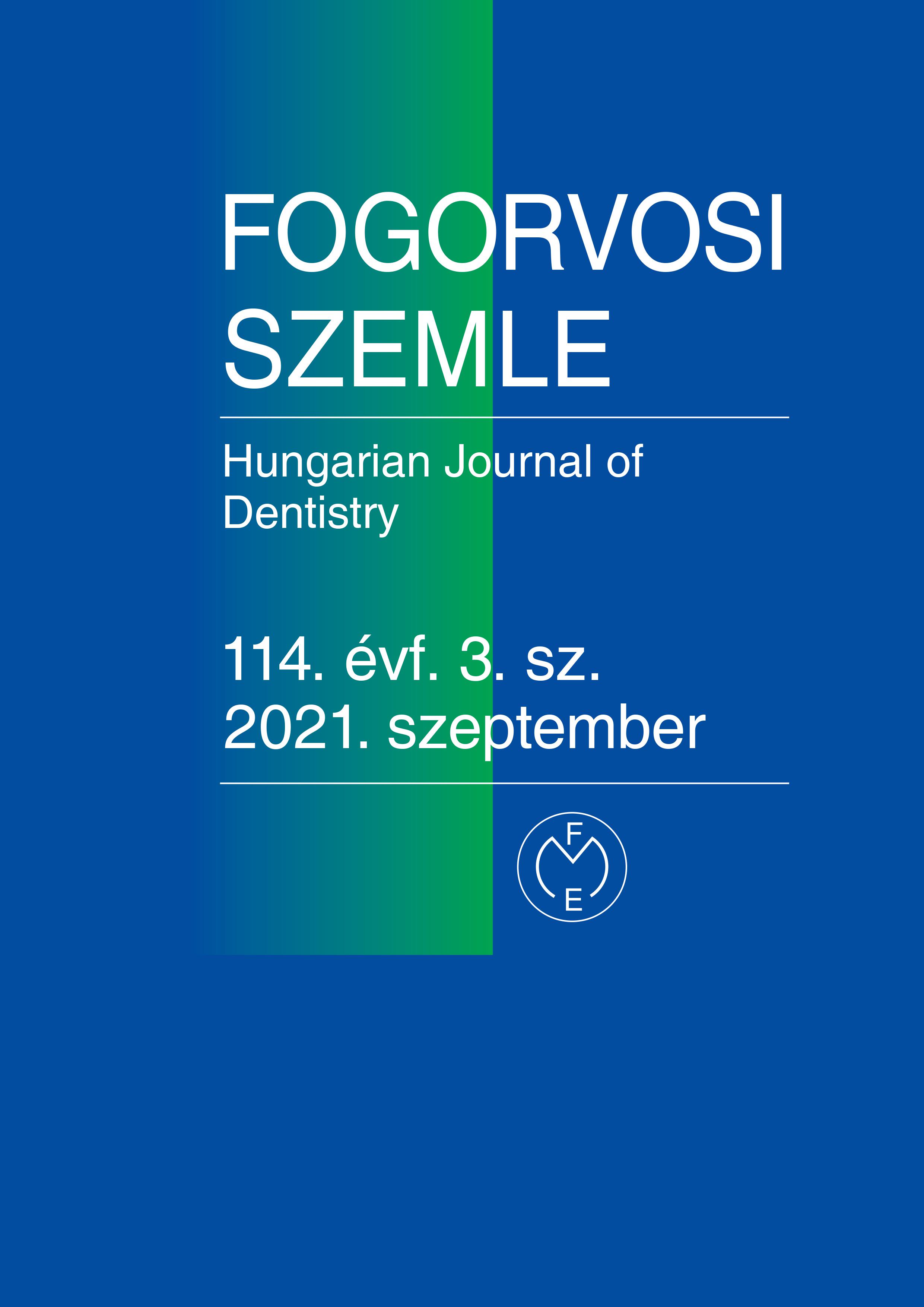Virtual planning and volumetric evaluation in the regenerative-reconstructive surgical treatment of a complex periodontal defect
Case presentation
Abstract
Aim: Our aim was to present the regenerative-reconstructive surgical treatment of a complex periodontal defect. Surgical
treatment planning was carried out on realistic virtual hybrid models, containing all relevant anatomical structures (teeth,
alveolar bone and gingiva). Additional aim was to evaluate the outcome of the surgical treatment, by the superimposition
of pre- and postoperative cone-beam computed tomography (CBCT) scans.
Materials and methods: Utilizing a semi-automatic segmentation method, the 3D model of teeth and alveolar bone
was generated from the CBCT scan using the open source radiographic image processing software, 3D Slicer. Spatial
registration of the hard tissue model acquired from the CBCT scan and the digital model acquired with an intraoral
scanner was performed based on anatomical landmarks. First step of the planned stepwise surgical treatment was the
extraction and simultaneous alveolar ridge preservation of tooth 26. Surgery was carried out according to the extraction
site development (XSD) technique. Second step was the regenerative treatment of the horizonto-vertical periodontal defect
involving tooth 24 and 25. Superimposition of the pre- and postoperative CBCT scans allowed to validate the volumetric
and linear changes.
Results: In the surgical area the cumulative hard tissue gain was 0.44 cm3. Crestal bone resorption of 0.11 cm3 occurred
at the palatal and buccal aspects. Linear measurements were performed to evaluate the hard tissue fill of the periodontal
defect around tooth 24 and 26. On average the intrabony component showed a 53.88 ± 36.84% of hard tissue
fill, with minor crestal bone resorption. On average a 1.22 ± 0.87 mm of gingival recession occurred around the teeth.
Conclusion: It can be concluded that hybrid models acquired with the aforementioned technique allowed detailed planning
of the surgical procedures. With the application of the postoperative volumetric and linear evaluation, the healing
dynamics of the complex defect could be demonstrated thoroughly.
Copyright (c) 2021 Authors

This work is licensed under a Creative Commons Attribution 4.0 International License.


.png)




1.png)



